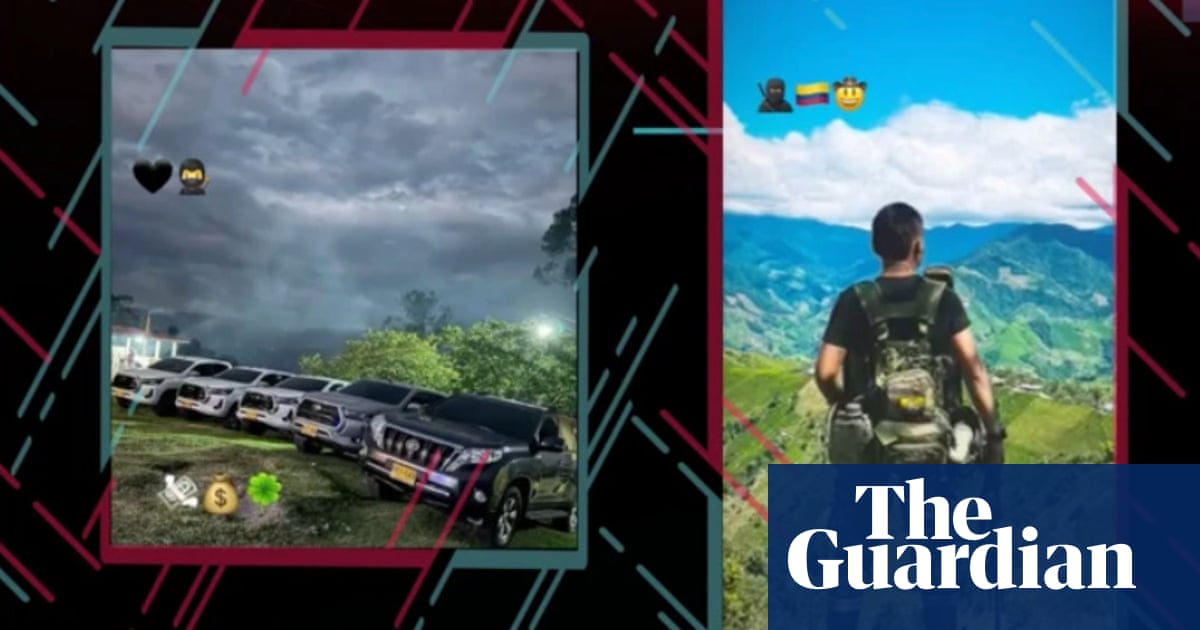Gangs inColombiaare increasingly recruiting children into their ranks, with a notable number coerced over TikTok and Facebook, the United Nations has warned.
The UN Human Rights Office inColombiasaid it had verified 474 cases of recruitment or use of under-18s between 2022 and 2024, and that the situation was “worsening in 2025”. In 36 cases children were recruited at school, while recruitment through social networking platforms was of “grave concern”, it said.
“It’s horrific, toxic and ugly. Illegal groups are using social media to lure girls and boys into their ranks, which is increasing violence across the country and strengthening narco-trafficking,” said Scott Campbell, Colombia’s representative for the UN high commissioner for human rights.
Elizabeth Dickinson, an analyst at the International Crisis Group, said the first contact often comes over social media, withTikTokrife with videos posted by armed groups “depicting the perks” of the lifestyle. Posts showed “parties in clubs, designer clothes and heavy weapons”, she added.
Campbell said the children are promised motorbikes, mobile phones and money, with girls also offered cosmetic surgery.
Investigators from the Special Jurisdiction for Peace (JEP) said such content spread rapidly, with some posts receiving up to625,000 views.
Campbell criticised social media companies for failing to properly tackle the problem. “If children were being recruited into illegal groups in London or Silicon Valley, social media companies would be putting huge resources into this,” he said.
TikTok andMetatold UN Human Rights they were working with state entities on the issue and removing harmful content.
The crisis was only worsening, UN Human Rights said, highlighting that in the first quarter of 2025 it had received 118 allegations of recruitment or use of children, of which it verified 51.
Child recruits were a big issue in Colombia’s decades-long internal armed conflict, with the JEP reporting that more than 18,000 minors were recruited by the rebel group the Revolutionary Armed Forces of Colombia,Farc, before it demobilised in 2016.
The findings come amid an increase in violence across Colombia. In January, clashes between armed groupsfighting for control of a regionbordering Venezuela led to the displacement of more than 50,000 people, while in June awave of coordinated bomband gun attacks killed at least seven people and wounded 50 across the country’s south-west.
Campbell said child recruitment appeared to be rising as presidential elections approach next year.
This month a 15-year-old was charged with theattempted assassinationof the presidential candidate Miguel Uribe. Colombian authorities haveclaimed a criminal organisationwas behind the attack.
TheInternational Crisis Grouprecently warned that the rate of child recruitment had reached its highest point in more than a decade. Meanwhile, JEP said that since the final peace agreement was signed with Farc in 2016, a minor had been recruited onaverage every 48 hours. Many families are too afraid to report their children missing due to fears of reprisals and stigmatisation.
In January, when 112 members of the armed 33rd Front turned themselves in, 20 were found to be minors. In another case, after a clash left nearly two dozen fighters dead, a third of those killed were discovered to be under the age of 18.
